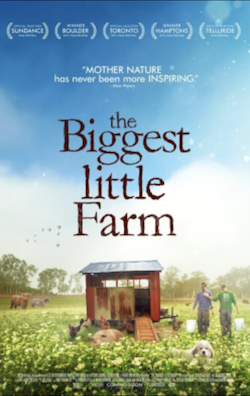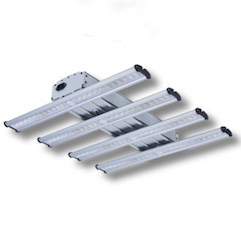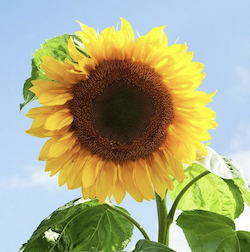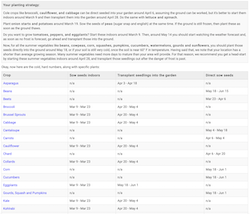It’s only the beginning of February, but already I’ve been out to look at the frozen veggie and flower patch I established last summer (you can just pick out the tops of my little garden fence and the Juniper tree branch that fell on it during a winter storm in the photo above), as documented in this blog at neHydro.com, the online home of New England Hydroponics.
In general, my recollection of the time I spent establishing it is very positive. At the top of the list was the daily routine – about 30 minutes or so when I watered and did some weeding. It wasn’t so much it was always fun, as much as it was a break outdoors in nature; something to look forward to, and a few minutes when I could put some separation between my workaday world and my (theoretically) semi-retired life.
What I’m Going To Fix This Season
The biggest issue I discovered last year was I didn’t have a good strategy to control weeds. I thought a passive nightly ‘get the big weeds’ approach would be adequate. It was not. I got behind very fast, and after a point I just gave up.
The good news is there’s an easy fix: a box hoe, a $35 tool you can find in most all gardening supply stores. My gardening BFFs in western MA were able to control weeds in their gardens which were almost 5 times the size of mine, so I’m confident this will work for me.
The second, almost equally important issue, is choosing what I want to grow, and how soon I needed to start. I didn’t start the “Family Project, Starting an Outdoor Garden” blog until April 20 last Spring, which as it turns out was on the late side, especially for root veggies like onions, beets, and potatoes.
I’m also a huge spinach and snow peas fan, which are cool weather crops; and offer the possibility of replanting another crop during warm months, such as more lettuce or even herbs. The thought of more herbs is growing on me; I had tried a chamomile patch outside of my garden but it failed miserably due to weeds, so it’s inside the garden this year.
What’s more, while I discovered the veggies were fun and delicious, I really enjoyed my flowers, even if I was only successful with my Zinnias and Morning Glories. Part of this was exposure to deer and chipmunks, which ate my planted sunflower seeds and/or the tops of my baby plants. So my fences are going to be beefed up, and mesh added low to keep out chipmunks and bunnies. The deer repellent I found after the fact last summer will be used from day one.
Lastly, I’m going to use more plant starts, which means I’m going to start scouring the garden stores early. By the time I got to them last season I was unable to find some of the varieties I wanted.
I’ll once again try to create some starts indoors too, but I will also do a much better job lighting them with some supplemental LED grow lights. I plan to use a FloraGear X4s dimmable full-spectrum LED grow light (left) that gives me good control of the light intensity so my seedlings don't get over-powered. Some will use florescent T5 lights to start seedlings too, and they work just fine too.
After last years' try it's clear leaving them by a South-facing window is just not enough.
New England Hydroponics also carries a full mix of highly-acclaimed High Mowing Organic Seeds – both for veggies and flowers. I used them last season and they rocked. I also appreciate their organic business model and philosophy; good karma is good karma.
Planning My Mix: Going For Bio-Diversity
I recently watched the documentary, The Biggest Little Farm, about a couple who bought a farm outside Los Angeles and converted a near-spent land to a rich and lush organic farm using the principles of bio-diversity.
Fact is my goofy little 12' x 7' garden won’t have much impact on the overall well-being of the planet, but my sense is we all should be mindful of bio-diversity, and its benefits not just to the physical world, but to our spirits. There’s something to be said about doing things in harmony with nature, rather than trying to overpower it.
I’m also doing more research this year and have found some wonderful resources, because it became clear I need more than 6 years of indoor gardening skills for a successful outdoor garden.
The two primary resources I’m using are Garden.Org and Garden Tom.
Garden.org is as comprehensive a gardening site as you could ever imagine; a gardening geek could well get lost with all the information this amazing site offers. If you’re new to gardening, and really want to get into the weeds, literally and figuratively, they offer an online gardening course you can take at your own pace.
Garden Tom’s (not me) blog was one I just found and is as lovely a blog as I’ve ever read, gardening or otherwise. Full of well-drawn illustrations, Tom is a man of mindful goodwill, and I simply like his style and strategy for bio-diversity, though I will be planting some different things, as I’d expect from any gardener.
In particular, I appreciate the logic to his matrix garden setup. It just makes sense versus the row setup I used last summer; I suspect I’ll get a better overall yield too. I also appreciate the fact he doesn’t want to work for the sake of work; there’s enough work to gardening without making more for yourself.
And while it’s not at the top of the list, the aesthetic of my garden matters to me. While I suspect part if it is my age and overall point of view, in my maturity I’ve come to value a sense visual balance (but not symmetry) and practical order … even though I still delight in the occasional rogue wildflower we have on our property resulting from previous years’ seedings.
Picking My Varieties
I plan to employ the same matrix-type setup as Garden Tom, and while my selections will be different, the rationale for planting will be similar.
First and foremost it’s a matter of what to plant, and when. ‘What’ is a matter of taste, but when requires a more practical approach based upon your locale. To this end, Garden.org offers a fabulous tool that lists potential veggies and flowers based upon ground and temperature conditions.
As I study the tool’s recommendations for my area, I can see I’ll want to think a little more in-depth on the subject, so that’s the plan. The one thing I know I want are sunflowers, so I’m going to buy some High Mowing seeds and get them started indoors. The hope is to get some big flowers replete with seeds enough to augment my winter bird (and squirrel) feeding, which is one of the simple joys of my life.
Interestingly, you can also have goals for your garden and lanscaping beyond feeding your family or the aesthetic of a given variety or strain of flower. Given my love bird-watching, I plan to read up on how to attract more with my gardening tactics, though at first pass reading on Garden.org it seems it’s more a tree and bush approach rather than a garden plot strategy.
The good news is this. It’s still early and the only thing you should be doing now is ordering seeds so you get what you want. But there’s still time to learn and to plan your garden while the soil is still frozen, as it is here in New England.
You know, with all the craziness in the world, a little quiet time learning about how you can harness the majesty of nature is good for the spirit. It's kind of fun too.
And if I can do it, surely you can do it too.
Tom Lanen is a family man, and a brand, retail and blog writer & commercial artist for New England Hydroponics' 4 MA and online stores; and president of Thomas Marketing Services Corporation (ThomasBoston.com). Having never really grown an outdoor garden prior to the 2020 season, he's somewhat amazed how much he came to love goofing around in his garden each day last summer. Now holed up for the winter with his family at their log home in the deep ‘burbs of Boston, he's enjoying his indoor garden, and is actively planning his second outdoor garden this coming second season.





